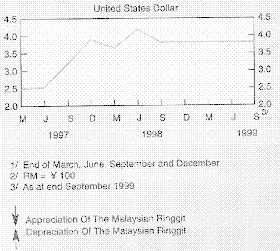The uptrend in the USD index, which coincided with the start of the Global Financial Crisis, is beginning to show signs of weakening. Among the weaknesses noted are the January 2009 'high' is lower than the November 2008 'high' and the 100-day SMA has started to curve downward. A correction looks very likely in the near future and it could commence if the USD index breaks below the 84 mark. See the chart below.

Chart 1: USD's daily chart as at Feb 10, 2009 (source: Stockcharts.com)
Would a collapse in the USD lead to further sharp sell-off in the US equity markets? This is not an easy question to answer. Firstly, the amount of foreign funds investing in the US markets may be relatively smaller than foreign funds investing in emerging markets (where a run on the currency would automatically lead to a sharp fall in the equity market). Secondly, a depreciating USD may not be that unpalatable since most economies would be equally impact by the upcoming global recession. Nevertheless, I believe that the US equity markets would suffer another bout of sell-off if the USD were to collapse.
I have appended below the chart of the Malaysian Ringgit vis-a-vis the USD and the performance of the KLCI during the Asian Financial Crisis 1997-98. Only after the Malaysian Ringgit has stabilized [due to the imposition of capital control measures in September 1998] then the KLCI begun to recover. Noticed the short unsustainable rebound in the USDMYR in the 1Q1998, which coincided with the rebound in the KLCI during that period.

Chart 2: USDMYR chart from Mar 1997 to Sep 1999 (source: Malaysian Treasury)

Chart 3: KLCI's daily chart from Jan 1997 to Jan 1999 (source: Tradesignum.com)
In conclusion, we need to track the USD closely. A sharp correction in the USD could be the catalyst for the next sell-off for the US equity markets. The latter could easily lead to a sell-off in our local market.
No comments:
Post a Comment